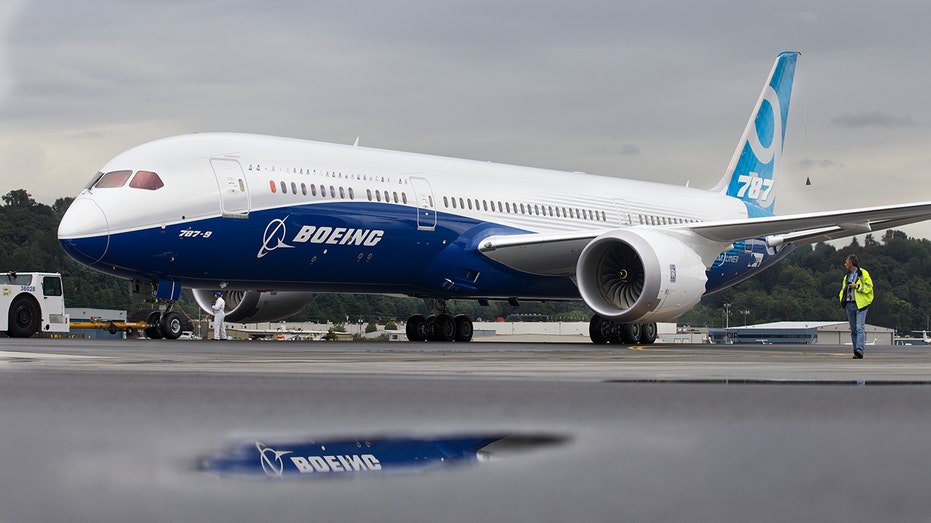Boeing faces new hurdle in delivering Dreamliners: WSJ
FAA to perform pre-delivery safety checks on some 787 Dreamliners, rather than letting Boeing sign off on new jets, amid tighter regulatory scrutiny
Federal air-safety regulators have stripped Boeing Co.’s authority to inspect and sign off on several newly produced 787 Dreamliners, part of heightened scrutiny of production problems that have halted deliveries of the popular wide-body jets.
| Ticker | Security | Last | Change | Change % |
|---|---|---|---|---|
| BA | THE BOEING CO. | 206.33 | -0.38 | -0.18% |
The Federal Aviation Administration said its inspectors, rather than the plane maker’s, would perform routine pre-delivery safety checks of four Dreamliners that Boeing has been unable for months to hand over to its airline customers while it grapples with various quality lapses.
The agency has long empowered Boeing to perform the final safety signoffs on the FAA’s behalf, allowing it to issue what are known as airworthiness certificates needed to hand over new jets to airlines. The FAA said it has withheld the same authority on some of the planes in previous years to keep inspectors’ skills current.
KEN FEINBERG'S LAW FIRM TO OVERSEE $500M BOEING 737 MAX VICTIM COMPENSATION FUND
Now, the FAA said its move to withhold final-approval authority was part of a broader set of actions directed at Boeing’s 787 production issues. A spokesman said the agency could decide to have its own inspectors sign off on more Dreamliners. “We can extend the retention to other 787 aircraft if we see the need,” he said.
A Boeing spokesman said Wednesday that the company has engaged the FAA throughout its efforts to resume Dreamliner deliveries and would follow the agency’s direction on final approvals as it has in the past. The spokesman said Boeing was “encouraged by the progress our team is making” on restarting the deliveries.

Federal air-safety regulators have stripped Boeing Co.’s authority to inspect and sign off on several newly produced 787 Dreamliners, part of heightened scrutiny of production problems that have halted deliveries of the popular wide-body jets. (Steph
After halting deliveries in October, Boeing has built up an inventory of more than 80 newly produced, undelivered Dreamliners, according to aviation consulting firm Ascend by Cirium. Boeing has said it expects to resume deliveries by the end of March.
The wide-body jets have an excellent safety record and are used frequently on international routes. Boeing learned of the FAA’s move in January and has already factored the FAA signoffs into its expected delivery schedule, a person familiar with Boeing’s planning said.
BOEING CEO WAIVED PAY BUT GOT COMPENSATION WORTH $21 MILLION
Among specific aircraft slated for final approvals by agency inspectors are two Dreamliners ordered by United Airlines Holdings Inc. United expects to receive the planes in late March or early April, a person familiar with the Chicago-based carrier’s plans said this week.
The Boeing spokesman said the manufacturer would adjust its delivery plans if needed so it can take the time to conduct comprehensive 787 inspections “to ensure each meets our rigorous engineering specifications.”
The suspension of deliveries has cut off a significant source of cash paid by customers as the plane maker navigates the Covid-19 pandemic and weak demand in global air travel. Bernstein analyst Doug Harned has estimated the Dreamliner delivery slowdown could cost Boeing as much as $8 billion in cash flow through 2020 and 2021. He expects half of that to be recovered next year as airlines take delivery and pay the rest of the cost.
Boeing said in January that it would likely continue burning cash this year but has adequate liquidity after raising billions of dollars in debt last year. Investor optimism about the broader travel recovery helped lift its shares by 21% last week. The stock gained another 3.3% on Wednesday, valuing Boeing at $149 billion.
While limited in scope, the FAA move on the Dreamliner is similar to a step the agency took after two crashes of Boeing 737 MAX jets killed 346 people in 2018 and 2019.
The FAA stripped Boeing of its authority to perform the pre-delivery safety checks on MAX jets in late 2019. At the time, a faulty flight-control system and production-related missteps with that aircraft were under congressional and regulatory scrutiny. The FAA approved the 737 MAX to resume passenger flights last year.
The Dreamliner lapses are among several quality problems Boeing has faced in recent years in its commercial, defense and space programs.
GET FOX BUSINESS ON THE GO BY CLICKING HERE
Many of the 787 quality lapses involve tiny gaps where sections of the jet’s fuselage, or body of the plane, join together. Problems have emerged in other places, too, including the vertical fin and horizontal stabilizer at the tail, according to a March 12 FAA summary of the agency’s regulatory actions viewed by The Wall Street Journal.
Boeing has previously disclosed problems with a factory process used to generate small shims—materials used to fill the small gaps where the aircraft sections are joined together. Such gaps could lead to eventual premature fatigue of certain portions of the aircraft, potentially requiring extensive repairs during routine, long-term maintenance.
In its summary, the agency said it would hold on to its Dreamliner approval authority “until it is confirmed all shimming issues are resolved and airplanes conform to the FAA-approved design.”




















